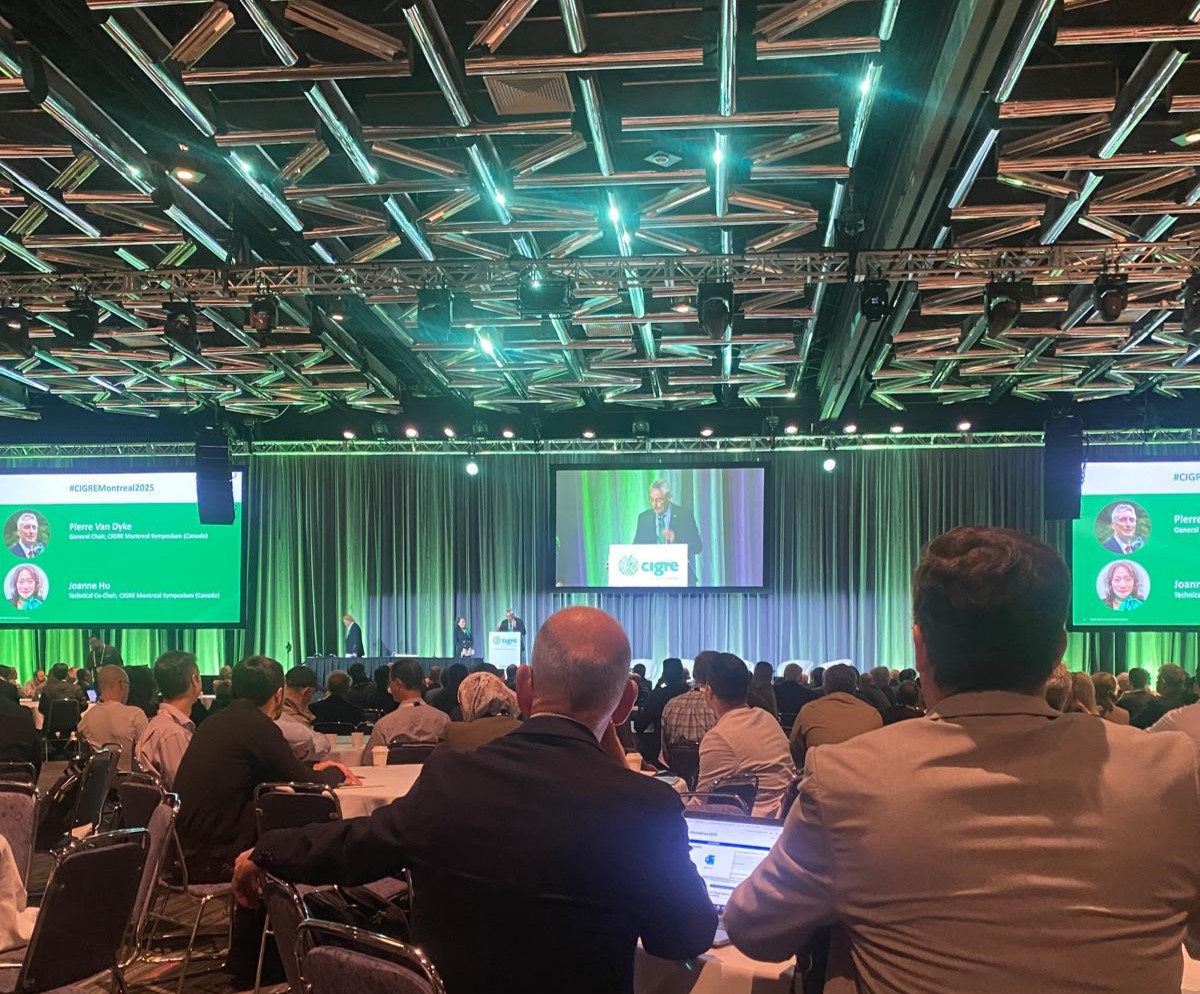
The 2025 CIGRE International Symposium in Montréal brought together utilities, manufacturers, and research institutions to discuss to discuss how grids must evolve as converter-based generation grows, new cross-sector and resiliency factors emerge, and markets adapt to a rapidly changing energy landscape. Over five days of technical sessions, it became evident that the industry is entering a period of structural change. The conversations were no longer confined to incremental improvements in equipment or planning tools. Instead, they focused on how entire system architectures must evolve to remain stable, efficient, and economically viable in a world dominated by inverter-based resources.
At eRoots, we were proud to contribute to this discussion on two fronts. Our team presented a new Generalised AC/DC Power Flow Methodology, developed entirely within VeraGrid, that enables planners and researchers to model hybrid AC/DC systems of any scale with flexibility and speed. We were also excited to see our open-source tools being used by other participants. One paper applied VeraGrid to model dispatch scenarios of an embedded HVDC link in the New York system, using historical market data to evaluate the operational behaviour of converters under realistic dispatch patterns. Seeing independent studies built on our open-core technology was a clear confirmation of how transparent, collaborative software can accelerate technical progress across the community.
Our discussions throughout the week reinforced several key directions shaping the future of grid development.
Across many sessions, it was clear that system planning is evolving beyond conventional power-flow and contingency analysis. Planners are beginning to integrate environmental, spatial, and social dimensions directly into network expansion studies.
This change reflects the growing need to anticipate not only electrical performance but also the constraints that determine whether a project can be realised at all. Route feasibility, permitting risk, and public acceptance are being incorporated alongside traditional criteria such as reliability and cost. At the same time, planning models are becoming more dynamic. Storage systems, flexible operation of existing lines, and grid-enhancing technologies are now considered as part of the planning process rather than as operational adjustments.
This convergence of technical and spatial factors is turning grid planning into a multidimensional optimisation challenge, one that demands more advanced, integrated modelling environments.
A second major axis of discussion concerned stability in inverter-dominated systems. As synchronous machines are retired, the physical inertia they provided to the grid disappears. Replacing this inherent stability with converter-based control has become a central engineering challenge.
At CIGRE, numerous studies examined the capabilities of grid-forming converters, hybrid STATCOMs, and multi-terminal HVDC systems to emulate or even enhance the stabilising functions once delivered by rotating machines. These technologies can maintain voltage and frequency during disturbances and support system recovery, but they also introduce new technical questions.
Interactions between multiple grid-forming units, protection coordination in low-inertia networks, and interoperability across manufacturers are now key research areas. The consensus was that stability is no longer a static property of the grid but the outcome of coordinated control. Understanding and designing for these dynamics correctly will define the next years of power-system engineering.
The third theme running through the conference addressed how market design must evolve alongside technical transformation. With increasing shares of renewable generation, traditional pricing mechanisms and capacity signals are being tested.
Several studies showed how locational pricing, bidding-zone reconfiguration, and flexibility markets can provide more accurate reflections of grid constraints and regional scarcity. Others explored the role of demand response and storage participation in smoothing price volatility. Advanced forecasting and machine-learning models are being introduced to predict renewable output and market trends with greater precision.
The overarching message was clear: as physical systems become more dynamic and decentralised, market structures must become equally adaptive. Aligning economic incentives with real network behaviour is essential to ensure that investment decisions continue to support reliability and resilience.
Taken together, these perspectives highlight a period of active renewal in the power sector. New control concepts, planning methods, and market frameworks are emerging in parallel, supported by growing collaboration between research institutions, system operators, and industry partners.
CIGRE 2025 provided a clear view of this transformation. The discussions in Montréal showed a community addressing complex technical and structural challenges with a shared sense of purpose. Rather than isolated advances, what stood out was the collective momentum toward more coordinated, transparent, and interoperable approaches to system development.
We were grateful to take part in these exchanges and to contribute to the technical dialogue shaping the future of grid modelling. The event reaffirmed the value of open collaboration and rigorous discussion in advancing the state of the art.
We look forward to continuing this conversation at the next CIGRE sessions and to seeing how the ideas shared in Montréal translate into practice in the years ahead.